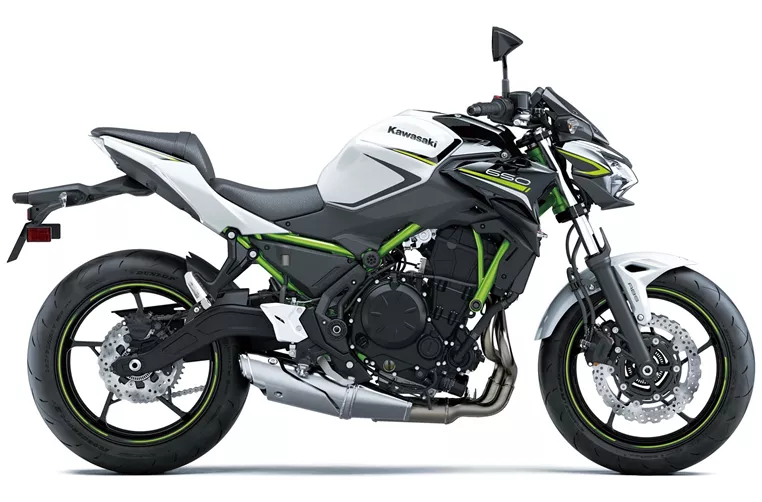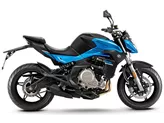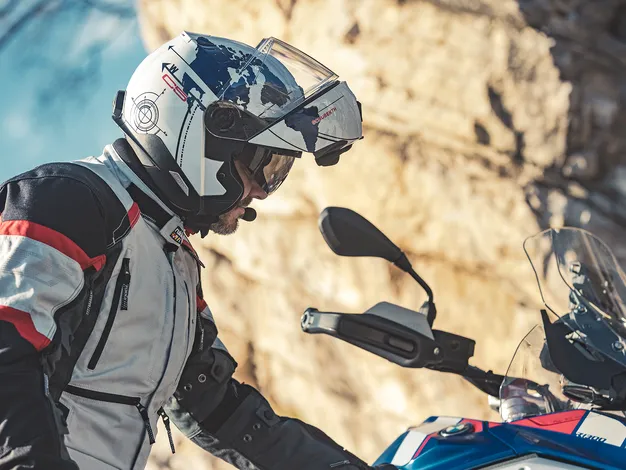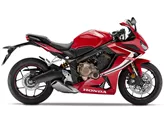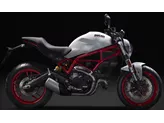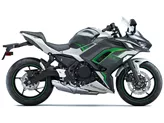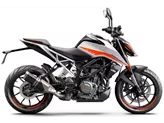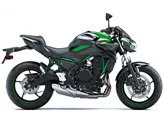Kawasaki Ninja 650 2017 vs. Kawasaki Z650 2020

Kawasaki Ninja 650 2017
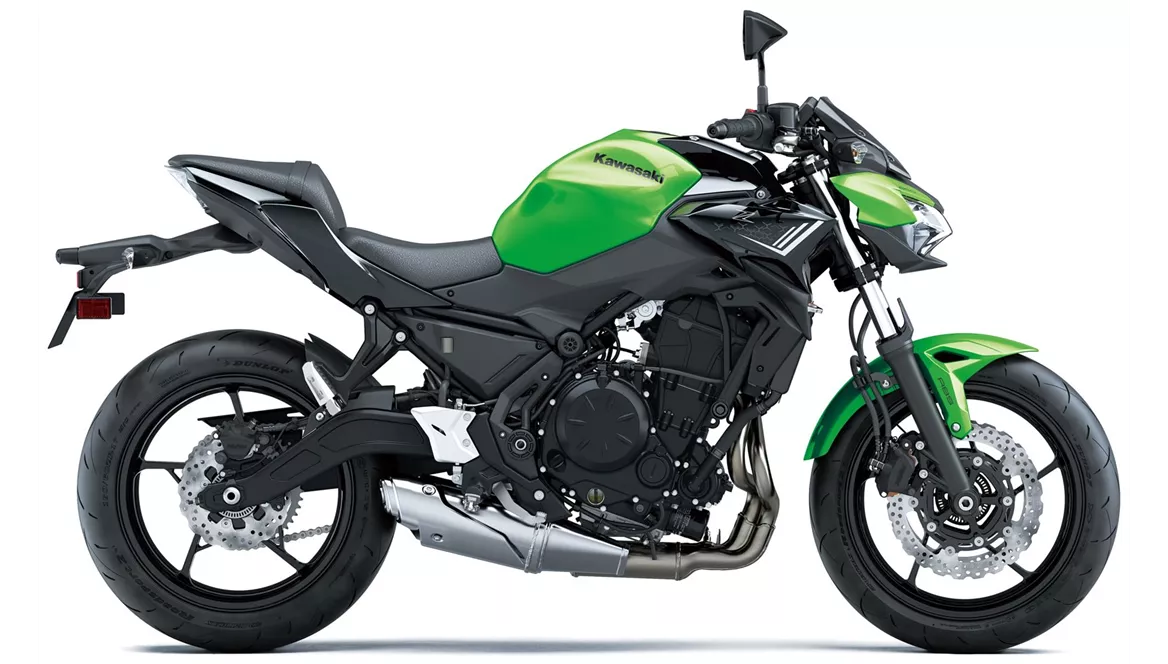
Kawasaki Z650 2020
Overview - Kawasaki Ninja 650 2017 vs Kawasaki Z650 2020
The Kawasaki Ninja 650 model year 2017 and the Kawasaki Z650 model year 2020 have many similarities in terms of technical specifications. Both models have an inline engine with a bore of 83 mm and a stroke of 60 mm. They also have the same engine power of 68.2 HP and torque of 65.7 Nm. The compression ratio, fuel system, throttle bore, cylinders, valves per cylinder, valves, cooling system, and displacement are all identical in both models.
In terms of suspension, both the Ninja 650 and Z650 have a telescopic fork front suspension with a diameter of 41 mm. They also have a swing arm rear suspension with a monoshock absorber and preload adjustment. The chassis of both models is made of steel and has a tubular frame type. The rake and trail measurements are also the same at 65.5 degrees and 100 mm, respectively.

Kawasaki Ninja 650 2017
Both models have double disk front brakes with a diameter of 300 mm and double piston technology. They also feature ABS as an advanced rider assistance system. The dimensions and weights of the front and rear tires, wheelbase, seat height, fuel tank capacity, and kerb weight with ABS are all identical in both models.
However, there are some differences between the two models. The Kawasaki Ninja 650 2017 is a supersport bike, known for its transparent chassis and sporty handling. It has excellent brakes and a sharp look inspired by the ZX-10R. The engine is also resilient. However, it lacks sound from the stock exhaust and may exhibit slight vibrations.
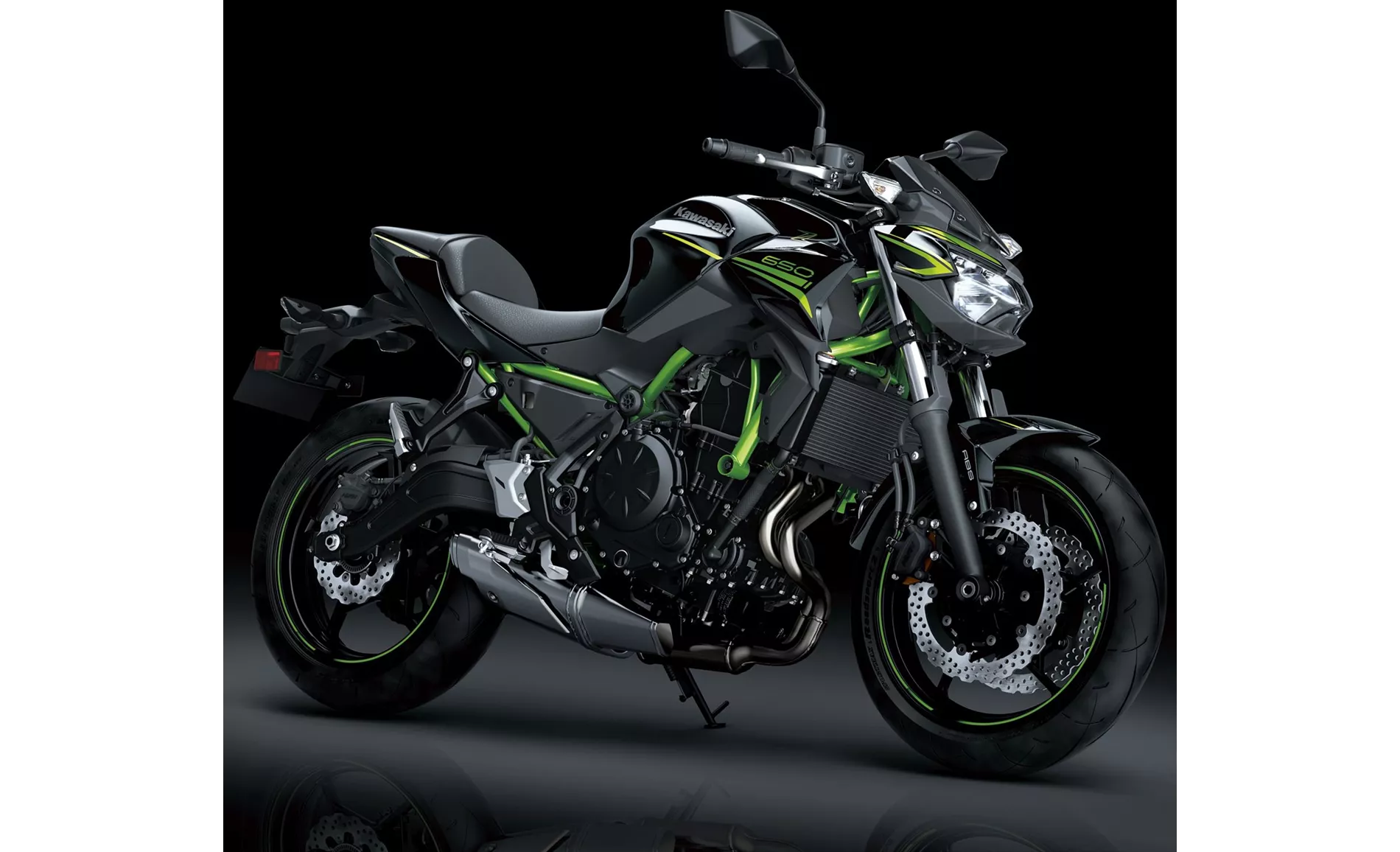
Kawasaki Z650 2020
On the other hand, the Kawasaki Z650 2020 is a naked bike with a powerful two-cylinder engine. It has an aggressive intake noise and compact dimensions, making it suitable for riders of all sizes. The low seat height and stable chassis contribute to its overall stability. The Z650 also features a TFT display with connectivity and a grown-up look. However, some riders may find the front brake pressure point to be an issue, and tall riders may find the bike uncomfortable. The Rideology App may also not be as sophisticated as expected.
In conclusion, both the Kawasaki Ninja 650 2017 and the Kawasaki Z650 2020 have their strengths and weaknesses. The Ninja 650 excels in sporty handling and looks, while the Z650 offers a powerful engine and compact dimensions. Riders should consider their preferences and priorities when choosing between these two models.
Technical Specifications Kawasaki Ninja 650 2017 compared to Kawasaki Z650 2020
Pros and Cons in comparison
Pros and Cons in comparison
Kawasaki Ninja 650 2017

The Ninja 650 firmly stamps its predecessor (Er-6f). The engine has mastered the Euro 4 hurdle well and serves up a very usable 68 hp, the chassis is simply great for this class, and the weight reduction of 18(!) kilos compared to the ER-6f justifies reverent nods.
Kawasaki Z650 2020

It's simply marvellous what Kawasaki has put together in a complete package with the new Z650. The technical components may not knock your socks off individually, but in combination they make for a pleasantly neutral motorbike that everyone will enjoy. No bitchy idiosyncrasies - simply a naked bike that works really well on winding country roads. Of course, the TFT display, which we don't find in the competition at the moment, is a plus, as is the grown-up look, which is strongly oriented towards the larger Z models. Only the pressure point of the front brake could have been more clearly defined - but you can't have everything in this price range.
Price Comparison Avarage Market Price Kawasaki Ninja 650 vs Kawasaki Z650
There are a few key differences between a Kawasaki Ninja 650 2017 and a Kawasaki Z650 2020. In terms of price, the actual average prices of both motorbikes are almost the same. A Kawasaki Ninja 650 2017 experiences a loss of 390 GBP in one year of ownership. This is offset by a loss of 30 GBP for a Kawasaki Z650 2020. Compared to Kawasaki Z650 2020 there are less Kawasaki Ninja 650 2017 bikes available on the 1000PS.de Marketplace, specifically 7 compared to 21. It takes less time to sell a Kawasaki Z650 with 80 days compared to 96 days for the Kawasaki Ninja 650. Since model year 2017 1000PS.de editors have written 20 reviews for the Kawasaki Ninja 650 and 31 reviews for the Kawasaki Z650 since model year 2017. The first review for the Kawasaki Ninja 650 was published on 04/10/2016 and now has more than 79,600 views. This compares to more than 25,000 views for the first review on Kawasaki Z650 published on 08/11/2016.

